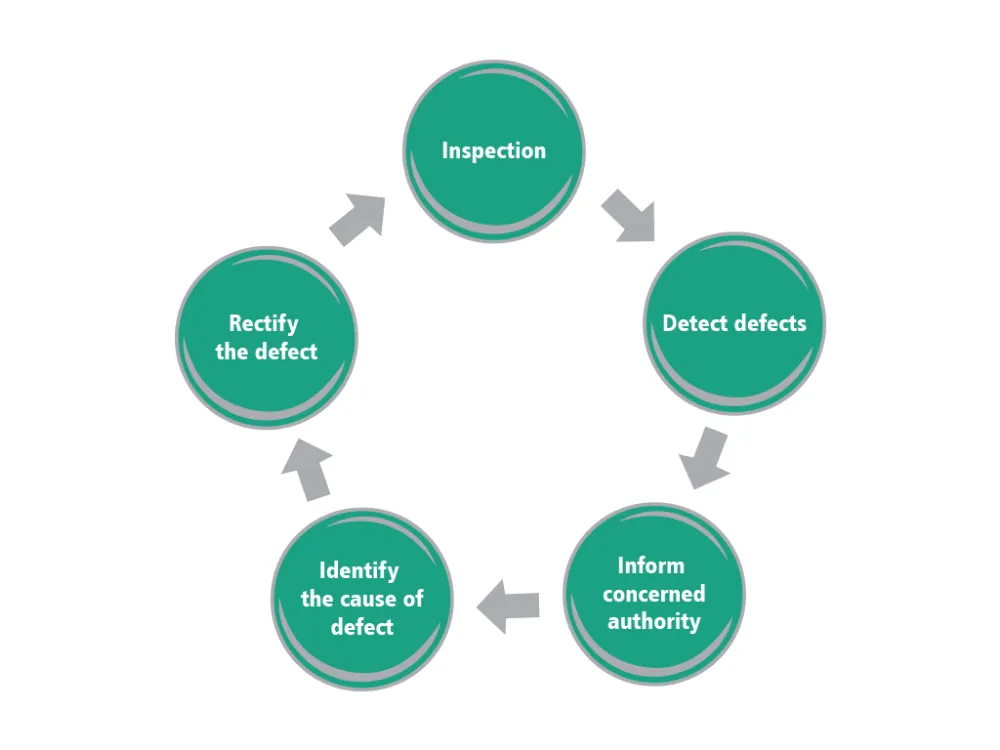Quality grading and inspections, Uncategorized
Quality grading and inspections
Courtesy: Quality grading and inspections
An inspection is, most generally, an organized examination or formal evaluation exercise. In engineering activities inspection involves the measurements, tests, and gauges applied to certain characteristics in regard to an object or activity. The results are usually compared to specified requirements and standards for determining whether the item or activity is in line with these targets, often with a Standard Inspection Procedure in place to ensure consistent checking. Inspections are usually non-destructive.
Inspections may be a visual inspection or involve sensing technologies such as ultrasonic testing, accomplished with a direct physical presence or remotely such as a remote visual inspection, and manually or automatically such as an automated optical inspection. Non-contact optical measurement and photogrammetry have become common NDT methods for inspection of manufactured components and design optimisation.

A 2007 Scottish Government review of scrutiny of public services (the Crerar Review) defined inspection of public services as “… periodic, targeted scrutiny of specific services, to check whether they are meeting national and local performance standards, legislative and professional requirements, and the needs of service users.”
A surprise inspection tends to have different results than an announced inspection. Leaders wanting to know how others in their organization perform can drop in without warning, to see directly what happens. If an inspection is made known in advance, it can give people a chance to cover up or to fix mistakes. This could lead to distorted and inaccurate findings. A surprise inspection, therefore, gives inspectors a better picture of the typical state of the inspected object or process than an announced inspection. It also enhances external confidence in the inspection process.
Manufacturing
Inspection and measurement of the thickness of the different layers of an electronic chip using THz and X-ray radiation. THz has the privilege of being non-ionizing (non-destructive) but the resolution of X-ray is higher.

Quality related in-process inspection/verification is an essential part of quality control in manufacturing. characteristics of a product or process and comparing the results with specified requirements to determine whether is the requirements are met for each characteristic. Common examples of inspection by measurement or gauging include using a caliper or micrometer to determine if a dimension of a manufactured part is within the dimensional tolerance specified in a drawing for that part, and is thus acceptable for use.
Design for Inspection (DFI) is a concept that should complement and work in collaboration with Design for Manufacturability (DFM) and Design for Assembly (DMA) to reduce product manufacturing cost and increase manufacturing practicality.
Photogrammetry is a modern way of visual inspection, delivering high accuracy and traceability for various industries. The portable 3D system is a versatile optical coordinate measuring machine (CMM) with a wide range of capabilities. Highly accurate point measurements can be taken with inspection carried out directly to CAD models, geometry or drawings.(DFI)
Fire equipment
Most fire equipment needs to be inspected to make sure in the event of a fire, every effort has been taken to make sure it doesn’t get out of control. Extinguishers are to be inspected every month by law and inspected by a servicing company at least once a year. Fire extinguishers can be heavy, so it’s a good idea to practice picking up and holding an extinguisher to get an idea of the weight and feel.
Business
In international trade several destination countries require pre-shipment inspection. The importer instructs the shipper which inspection company should be used. The inspector makes pictures and a report to certify that the goods that are being shipped and produced are in accordance with the accompanying documents.
Commodity inspection is other term that is used between buyers and sellers. The scope of work for commodity inspection depends to the buyers. Some buyers hire the inspection agencies only for pre-shipment inspections i.e. visual quality, quantity, packing, marking and loading inspections and some others request for higher level inspections and ask inspection agencies to attend in the vendor shops and inspect commodities during manufacturing processes. Normally inspection is done based on an agreed inspection and test plan (ITP).

